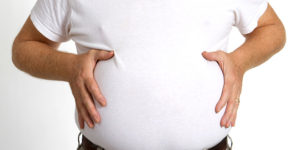I often receive referrals for patients presenting with persistent vomiting and a background history of long-standing diabetes mellitus from my colleague endocrinologists and physicians. Once the common causes are ruled out – such as drugs (metformin), hyper- or hypoglycaemia, diabetic ketoacidosis, infections and pancreatitis – my mind inevitably turns to gastroparesis.
What is gastroparesis?

Picture credit: Google
Gastroparesis is also known as delayed gastric emptying. That means the movement of food from the stomach to the small intestine slows down.
Normally, the muscles of the stomach (controlled by the vagus nerve) contract to break up food and move it through the rest of the gastrointestinal tract as part of digestion. Gastroparesis occurs when the vagus nerve is damaged and movements of the stomach muscles become retarded. This causes food to take a longer time to pass through to the small intestine, or remain stuck in the stomach.
What are the causes of gastroparesis?
The most common cause of gastroparesis is uncontrolled diabetes mellitus. The risk of developing the condition is also higher in those with chronic diabetes and its associated complications related to the eyes, nerves and kidneys.
Other causes include:
- Injury to the vagus nerve following gastric surgery
- Medications, such as narcotics and anti-depressants
- Neurological conditions such as Parkinson’s disease and multiple sclerpsos
- Rare diseases like amyloidosis and scleroderma
What is the relationship between blood glucose levels and gastroparesis?
An elevated blood glucose level directly interferes with normal stomach emptying, so good blood glucose control in people with diabetes is important. However, gastroparesis can make blood glucose control challenging.
When food that has been delayed in the stomach finally enters the small intestine and is absorbed, blood glucose levels rise. Gastric emptying is unpredictable with gastroparesis, which results in blood glucose levels to be erratic and difficult to control.
What are the symptoms of gastroparesis?
Patients with gastroparesis may experience the following symptoms:
- Nausea and/or vomiting
- Loss of appetite
- Bloatedness
- Abdominal pain
- Unintentional weight loss
- Heartburn
How is gastroparesis diagnosed?
All assessments include a thorough history and clinical examination, certain blood tests (including blood glucose levels) and other diagnostic tests, such as:
- Barium swallow. This is an X-ray, or series of X-rays, taken after you drink a liquid containing barium that allows visualisation of any blockages in the upper gastrointestinal tract
- Gastric manometry. A thin tube is passed through the mouth and into the stomach to measure the stomach’s electrical and muscular activity which can determine the rate of digestion.
- Upper gastrointestinal endoscopy. This procedure involves an endoscope to look inside the stomach and part of the small intestine, to identify any ulcers or inflammation. It is done under sedation.
- Scintigraphy scan. This scan requires you to consume food containing a small amount of radioisotope. Then a scanning machine picks up how much food is in the stomach after 4 hours. If the scan shows more than 10% of the food taken is still in the stomach, it is diagnostic of gastroparesis.
- Ultrasound of the abdomen. This is useful to eliminate other possible causes of the presented symptoms.
How is gastroparesis treated?
The primary treatment goals for diabetic gastroparesis are to improve gastric emptying and regain control of glucose levels. The latter can be achieved by optimising medications for treatment of diabetes mellitus, introducing/adjusting insulin therapy if necessary.
The treatment of gastroparesis itself depends on its severity. Unfortunately in most cases, gastroparesis cannot be completely cured. It is usually a chronic condition which comes and goes. The goal, therefore, is to control the symptoms.
Medications such as metoclopramide, domperidone and erythromycin are motility drugs that help the stomach muscles move food out of the stomach faster. There are also medications that help relax the stomach and reduce nausea and vomiting.
A feeding tube may be needed if the stomach is unable to process food. The tube can be removed once the stomach starts working properly again; however it may be necessary long-term if the gastroparesis is severe.
Prolonged severe gastroparesis can occur if the condition does not resolve following medications and dietary measures. In these cases, a gastroenterologist may recommend parenteral nutrition – a liquid food mixture supplied intravenously through venous access in the chest or arm.
Gastric Electrical Stimulation may be effective for some people who have severe, persistent nausea and vomiting. However, this treatment option is not readily available.
How else can the symptoms be controlled?
There are several lifestyle modifications that can help relieve symptoms of gastroparesis:
- Walk after meals.This may help speed up digestion.
- Reduce dietary intake of fat and fibre.High-fat and high-fibre food may be difficult for the stomach to digest. People with gastroparesis should reduce the intake of these foods because the undigested parts may remain in the stomach too long. Some examples of high-fibre food include oranges and broccoli.
- Eat small and frequent meals.This will make digestion easier.
- Drink more liquids with meals. Soft or liquid meals, such as soup, are recommended. Liquids empty more quickly from the stomach and blended foods are easier to digest.
- Stop smoking.Nicotine can damage blood vessels, slow digestion, and make it more difficult to achieve good blood sugar control.
- Do not consume alcohol.Alcohol is known to alter gastric transit times and worsen reflux symptoms.
By Dr. Chieng Jin Yu, Medical Lecturer, Consultant Gastroenterologist and Hepatologist, Universiti Putra Malaysia (UPM).
Reference
American College of Gastroenterology – Gastroparesis. Jean Fox, MD and Amy Foxx-Orenstein, DO, FACG, Mayo Clinic, Rochester, MN, and Scottsdale, AZ – Published August 2004. Updated November 2008. Updated December 2012.
[This article belongs to The Malaysian Medical Gazette. Any republication (online or offline) without written permission from The Malaysian Medical Gazette is prohibited.]
